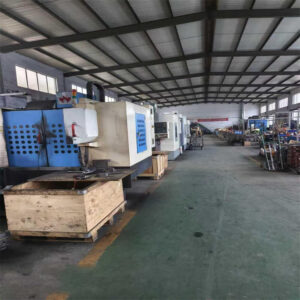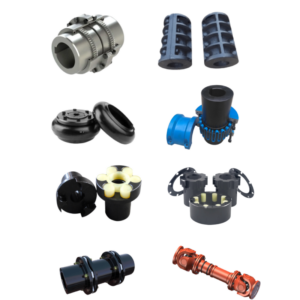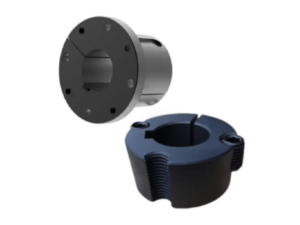Sprockets are critical components in chain drive systems, widely used in machinery, bicycles, motorcycles, and industrial equipment. Their design directly impacts system performance, efficiency, and durability. One of the most fundamental relationships in sprocket design is the connection between sprocket size (diameter) and the number of teeth. This article explores this relationship and its practical implications.
1. Basic Principles: Sprocket Geometry
A sprocket’s size is primarily determined by two factors:
- Number of Teeth (N): The total teeth evenly spaced around the sprocket.
- Chain Pitch (P): The distance between the centers of two adjacent chain pins, measured in inches or millimeters.
The pitch diameter (D) of a sprocket, which defines its effective operating diameter, can be calculated using the formula:D=Psin(πN)D=sin(Nπ)P
This equation shows that as the number of teeth (NN) increases, the denominator sin(π/N)sin(π/N) decreases, resulting in a larger pitch diameter. Conversely, fewer teeth produce a smaller sprocket.
2. Tooth Count and Sprocket Size
- Linear Relationship: While the formula involves trigonometry, the relationship between tooth count and sprocket size is approximately linear for practical purposes. Doubling the number of teeth roughly doubles the sprocket diameter, assuming the chain pitch remains constant.
- Example: A 10-tooth sprocket with a 0.5-inch pitch has a pitch diameter of approximately 1.58 inches. A 20-tooth sprocket with the same pitch will have a diameter of about 3.19 inches.
3. Chain Pitch’s Role
Chain pitch (PP) acts as a scaling factor. Larger pitches (e.g., heavy-duty industrial chains) require larger sprockets for the same tooth count. For instance:
- A 15-tooth sprocket with a 1-inch pitch has a pitch diameter of ~4.82 inches.
- A 15-tooth sprocket with a 0.25-inch pitch has a diameter of ~1.2 inches.
Thus, both NN and PP must be considered when designing or replacing sprockets.
4. Practical Implications
A. Speed and Torque Trade-off
- More Teeth (Larger Sprocket): Increases mechanical advantage, reducing output speed but increasing torque. Suitable for applications requiring high force (e.g., conveyor belts).
- Fewer Teeth (Smaller Sprocket): Increases speed but reduces torque. Ideal for high-RPM systems (e.g., bicycles).
B. Wear and Engagement
- Higher tooth counts distribute chain load across more teeth, reducing wear on individual teeth and chains. Small sprockets (<12 teeth) experience higher stress and faster wear.
C. Space Constraints
- Compact systems (e.g., motorcycles) often use smaller sprockets to save space, while industrial machines prioritize durability with larger sprockets.
5. Choosing the Right Tooth Count
Selecting the optimal tooth count involves balancing:
- Transmission Ratio: The ratio between driver and driven sprocket teeth determines speed and torque.
- Chain Life: More teeth improve longevity but increase cost and weight.
- System Compatibility: Sprockets must match chain specifications (pitch, width).
Conclusion
The size of a sprocket is intrinsically linked to its tooth count and chain pitch. Understanding this relationship allows engineers and designers to optimize chain drive systems for efficiency, durability, and performance. Whether prioritizing speed, torque, or longevity, the interplay between NN and PP remains a cornerstone of mechanical power transmission design.







